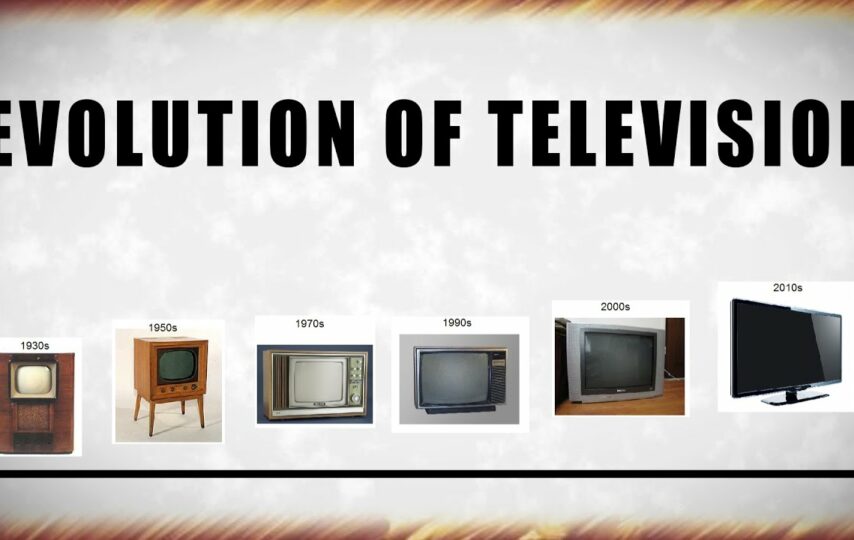Many of us remember television as simple picture boxes with similar shows over and over again. Mostly there were a set number of channels, while a few more got available with a paid cable. However, even with that, you had to watch whatever was on.
Compared to that, today, you have many options across different categories and niches. Moreover, the quality has immensely improved in contrast to what we had decades ago. Finally, technological advancements started changing the whole television industry. During all this, internet technology also saw many improvements and upgrades. Today, we have high-speed internet connectivity and nationwide availability such as Mediacom Bundle Deals, with a next-gen networking ecosystem.
All these evolutions made television sets smarter and better than their predecessors. As a result, they can deliver top-tier results, and let you download, stream, watch content and even play games. So, today, we are going to learn about the leading technologies that have revolutionized the television industry.
High-Definition Televisions (HD TV)
In 1927, the first-ever television set came out. Back then, it displayed pictures in black and white only. It was not until 1960 that the colors became common, and they stayed that way for several decades. The only major change was the growing amount of pixels per inch. The standard definition set had an image with 480 rows and 640 columns of pixels.
After that, the pixel count increased to 720 rows of pixels for a beautiful HD resolution. This was due to the advancements in digital technology, which grew more over the years. Due to this, the HD was soon replaced by 1920 x 1080 FHD resolution.
4K Display Televisions
Ever since the first advancement, television sets have continued to evolve and are still getting upgrades. Some like to add more words before definition, like Ultra High Definition or UHD, while others like to say it more clearly, i.e. 4K resolution. It holds in twice as many pixels as the full high definition or FHD screens. Hence, the numbering is 1920×1080 for FHD and 3840×2160 for UHD. Still, even that is not all. More advancements have been made, enabling a double of the UHD, referred to as the Full Ultra High Definition, or FUHD, or 8K with a resolution of 7620×4360.
However, 4K and 8K technologies are yet to become massively available!
Organic Light Emitting Diode Televisions (OLED TV)
The electroluminescence technology helps achieve the ultimate level of the picture through OLED pixels. In these OLED pixels, each pixel creates light illuminating the screen depending on the input current. As a result, these OLED screens produce perfect colors especially black, which is darker and a brighter white. This amazing contrast level makes the picture quality the best of them all.
Another great advantage of OLED screens is that they can help produce amazingly light and thin screens. This change can render the screen flexible enough to curve, thus the birth of Curve TVs. It greatly improves the viewing experience and allows constant focus equally on each area. Whereas on a flat screen, the screen from the corner edges is farther away than the center pixels. This can create distortions resulting in a low viewing experience. Hence, curving the screen removes that gap and distortion and improves consistency in focus.
Moreover, OLED screens can be really thin and light. Although not many people are in favor of such TVs, they are mostly used in gaming or for individual purposes.
Smart Televisions
The mass production of smart TVs started in 2007 by HP, and the Samsung Bordeaux 750 TV came out in 2008. Since then, smart TVs have gained huge popularity because of all their great features.
You can connect your Smart TV to the internet and watch your favorite content. In addition, it comes with several built-in apps with the capability for downloading even more. However, just like phones, these also collect user data which may risk privacy and security for some. Another noticeable thing is that the operating system on most TVs is not upgradeable, which may make it obsolete faster. So, do keep this in mind before getting one.
Still, these issues are not that big, and the pros outweigh them easily. These Smart TVs come in the market from many brands like Android TV or Apple TV. Most of these models have built-in voice control features and profile settings for ease of use.
Internet Televisions
Although TV sets have seen many advancements, content sources have also improved. Since smart TVs and internet TVs can run on the internet, the cable and satellite providers have been left behind. However, people have adopted newer ways to watch content.
The internet protocol TV or IPTV streams content through a private network, and you can watch it on traditional TVs. That is after a set-top box. Using this, you can view not only live TV but also on-demand content.
Same as cable lines, you have to pay for a subscription, which comes with various packages at different price points.
Streaming Services
With the rise in popularity of smart TVs and internet TVs, the demand for better content also went up. This called for a better, more advanced form of watching content or streaming services. And thus, OTT or Over Top Technology came in, but it relies heavily on the internet. And with it came a wave of streaming service providers starting with Netflix in 2007. It has millions of paid subscribers that enjoy thousands of hours of content.
After that, many providers started entering the OTT market, like YouTube TV, Amazon Prime Video, Hulu, and many others. All these services offer different rates but are usually less than most cable services. However, you can watch using OTT over a more advanced TV set, like Apple TV, SmartTV, FireStick, Chromecast, and others.
However, with that, you would also need a better quality internet connection. Although these media boxes don’t take much speed or bandwidth, you may need higher speeds for better resolutions or multiple users. For that, you do have various options, but a reliable and affordable provider is always recommended. And one such name in the industry is Mediacom. You can click here and view their different internet plans, packages, and pricing. Or use the same link to contact their customer support team for further assistance.
Final Takeaway
The television industry has seen quite a few improvements over the years, and more is yet to come. However, the technology in effect today, including the 4K or 8K screens, is more than enough for an immersive experience. Still, advancements are not only focused on improving quality but also on improving customer experience.
Due to this, today, we have wall-mounted TVs, as thin as possible TVs, curved TVs, and much more. And media boxes are like a cherry on top. So, you have many options available, and you can select one that best suits your needs, enjoyment requirements, and preference.
But we prefer going for at least a smart TV with a 4K resolution to avoid going for upgrades a few years after. Also, make sure you have a strong intenet connection and for that yuou can go on any search engine and type internet providers in my area, to find out great internet offers.








